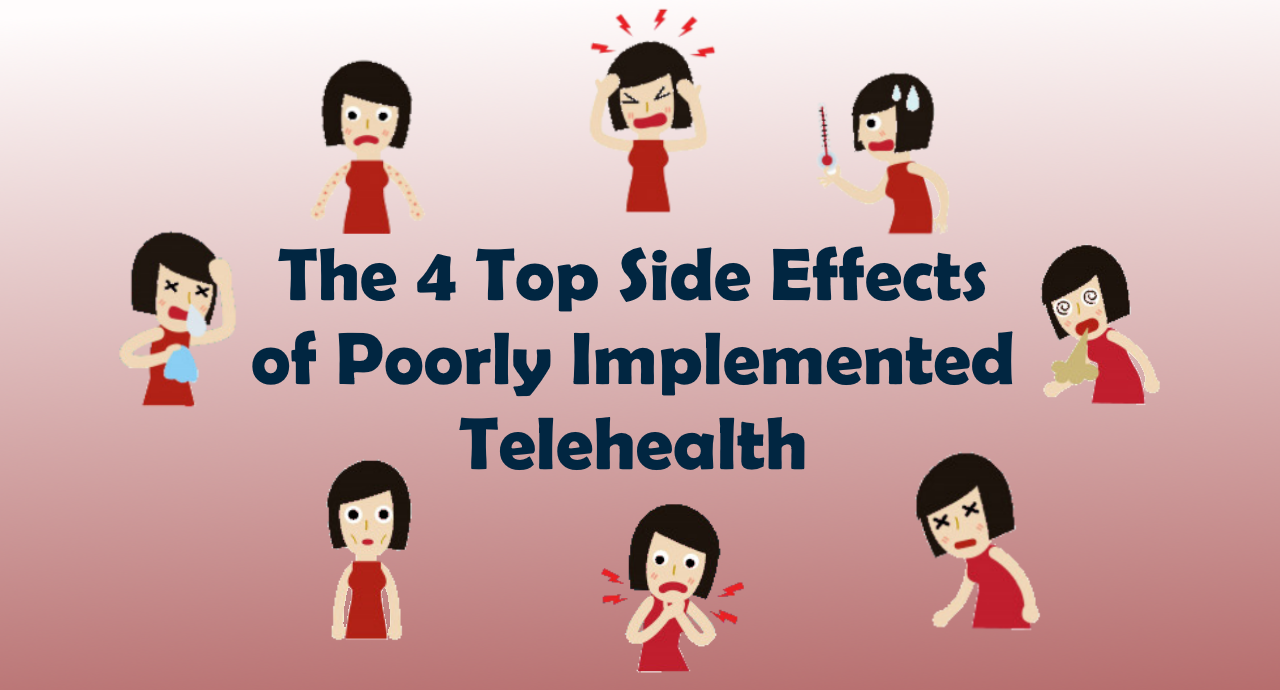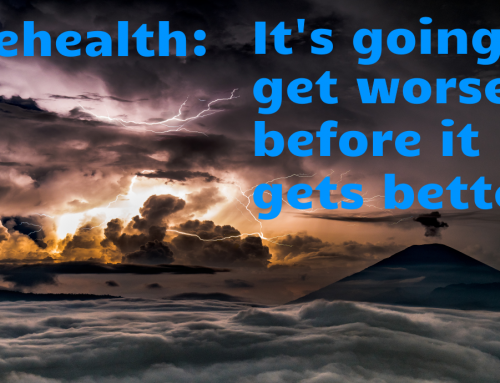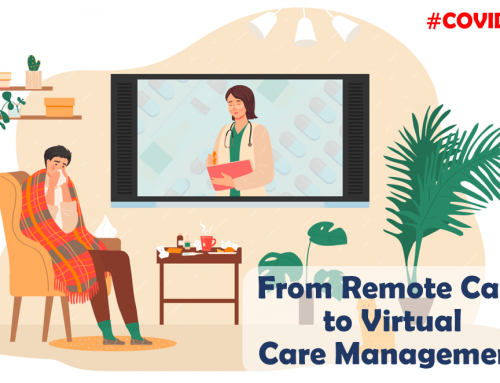These days, during the COVID-19 health crisis, telehealth is approached by many leaders as a necessary stop gap measure, as something that they have to do, because restricting patients’ access to care altogether is not a viable option for most healthcare organizations.
Telehealth, on the surface, seems like a fairly easy thing to implement: subscribe to video chat software, equip the clinicians with an iPad or a laptop and start scheduling patients. The main thing that seems to be confusing is billing, but eventually that’ll be sorted out, because it seems like these days you can get reimbursed for virtually anything (pun intended).
But as the COVID-19 health crisis is now entering the fifth week of widespread social distancing, it is becoming evident that good will and a can-do attitude alone cannot sustain a virtual practice.
By now it has occurred to most enlightened leaders, that quite possibly telehealth is here to stay for good; that a portion of care services can indeed be delivered at a distance without a great loss of clinical quality, if any at all.
Few conditions, if any, are diagnosed on the spot by a physician and even fewer are exclusively diagnosed by laying hands on a patient. Most diagnoses require tests (involving biofluids or tissue samples), exams (such as X-rays, sonography or CT scans) or a simple “wait and see” approach. Many vital signs these days can be relatively reliably obtained by the patients themselves.
In my 20 years of experience in healthcare, I have found that the clinicians, nurses and others involved in providing or enabling the delivery of care are incredibly patient (which is kind of funny, because the modern healthcare consumers of today are anything but ‘patient’). They will go to extreme lengths to ensure that patients get the best possible care.
And while this crisis endures, our healthcare professionals are genuinely worried about patients not getting the care they need, they will tolerate a wide array of breakdowns in the processes and technologies.
But as time progresses, what seemed like an acceptable thing to do in the first weeks of this crisis, now is no longer sustainable.
Just last week one provider described to us that in their practice, it’s the providers who are scheduling and rescheduling patients and helping patients with the technology, which, as you can imagine, is “not really working well” for them.
The honeymoon period — for providers, staff, and patients — will be over soon, if it isn’t already.
The Top 4 Side Effects of Poorly Implemented Telehealth
By not doing telehealth right, you are inviting a whole host of potential problems that can hurt your practice in the very near future.
The consequences of poorly implemented telehealth include serious long term ramifications for the sustainability of your outpatient practice. With innovative, nimble players like Medicare Advantage Plans and Medicaid CMOs; with cash-pay virtual-only healthcare providers like Teladoc, Amwell, or Parsley Health; and with employer-paid, virtual-first providers such as Amazon Care and Walmart Health, the competition for virtual care, the fight for your patients’ attention, will become incredibly fierce in 2021. And it’s those easy-to-treat conditions so amenable to telehealth, that provide your practice with a sustainable business model.
Over the past decade I have implemented dozens of telehealth services and have developed a thoughtful, comprehensive approach that typically took weeks to design and implement, which we are now able to launch in a matter of days. All of the “side effects” below can be easily avoided and mitigated early if you allow an expert to guide the process.
1. Poor Patient Experience and Patient Attrition — while patient satisfaction with telehealth is typically very high, it is largely because patients are mostly grateful for the convenience and the safety that receiving care at home presents. But direct-to-consumer telehealth with bring-your-own-device technology is one of the top 5 most challenging telehealth services. Over the years, we have developed and taught our clients a set of proactive practices that lead to stellar patient experiences.
Patients now find themselves in a fiercely-competitive landscape that knows no geographic boundaries. Once they have experienced a smooth, professional, awesome telehealth visit vs. one fraught with technical glitches, confusing communication and not-very-confident and not-very-professional-looking physicians (e.g., grainy picture, poor lighting, awkward face framing, distracting background, etc.) — patients, when given the choice, very clearly know which telehealth provider they will want to use in the future. They will take their virtual care needs elsewhere.
2. Poor Financial Performance and Legal Risks — the reimbursement landscape for telehealth shifted dramatically in March 2020 as widespread social distancing took hold and CMS and other agencies opened the floodgates to ensure that care could be delivered to those who needed without the fear of diminishing revenue. But the playing field is not the same across all clinical specialties, provider levels, and definitely not across all payors. During this special time, it takes a tremendous amount of attention to detail to stay abreast the rapidly changing landscape.
Traditionally, the billing team is at the tail end of a healthcare organization’s money trail and other than the occasional reject claim, the tail would never “wag the dog”. But telehealth requires a very different mindset. If not implemented, it will hurt the financial performance of an organization — by rendering non-billable services or by leaving money on the table by not taking advantage of the new ways to provide remote care that is reimbursable).
But the main reason for poor financial performance is that most organizations are failing to bring their visit volumes quickly up to pre-covid volumes. One of our clients was back up at over 80% of visit volume by the 7th day of implementing telehealth. Therein lies the true, measurable cost of poorly performing telehealth services.



3. Disillusioned Physicians, ready to call it quits — while physician buy-in into telehealth has historically been low, virtually all physicians that I have worked with over the past 10 years have come to like and even love telemedicine as an effective way to deliver care to their patients. Among my colleagues I’m known as the “physician whisperer” for my ability to turn vigorously-opposed clinicians into telehealth zealots (though I can’t do much with resigned, apathetic providers). The majority of physicians understood the need for telehealth during the beginning of this health crisis and were professionally willing to plow through the discomfort and challenges, because their patients need this service. But if they continue to be left with poor support and user-unfriendly & glitchy technology, they will no longer be willing to even consider telehealth if it is no longer required post-Covid. Some in the industry are expecting a mass exodus of clinical staff once the worst of the crisis is over, and the poor experience with telehealth will have contributed to it. With a nationwide physician shortage, most health care practices simply cannot afford to lose providers.
4. Leadership, Staff, and Clinician burnout — And it’s not just the clinicians who are experiencing burnout. Leadership, schedulers, billing staff, nurses, MAs, etc. who are doing the heavy lifting of making things up as they go and working extra hard to make things work while fearing the risk of being furloughed or even let go. All of them are under a great deal of pressure and once the telehealth honeymoon period is over and the goodwill and tolerance for poor performance by patients and clinicians is waning, things are even harder to maintain.
The Cure: Expertise and Experience
The difference between doing telehealth and doing telehealth well is the difference between fixing your own car or building your own deck vs. letting a professional mechanic or experienced handyman do the job.
Yes, as an amateur you can do a decent job, but it won’t be as good or as fast as if you hired a professional. Yes, you can deal with many challenges, find work arounds and fix mistakes and may even feel good and proud in the process of figuring it all out on your own. But it is not the most efficient and effective way to do it.
Expert telehealth service designers and implementers, such as our team at Ingenium, can design and implement a high-performing telehealth service in days, achieving sustainable high standards of satisfaction by staff, by clinicians, and by patients while maximizing visit volumes, billable visits and minimizing legal risks.
Our best clients are seeing and occasionally are exceeding pre-Covid visit volumes with the physicians reporting high satisfaction not only with the experience but more importantly with their assessment of the clinical quality of the visits.
Wouldn’t you want that for your patients, your staff, your physicians?
Telehealth is not a stop gap measure and should not be left to amateurs.
In healthcare we are all about finding the most experienced, most specialized, clinically trained professionals to solve our health problems.
Why would you do anything different with telehealth and just use your existing staff without the guidance and insights of professionals?








To receive articles like these in your Inbox every week, you can subscribe to Christian’s Telehealth Tuesday Newsletter.
Christian Milaster and his team optimize Telehealth Services for health systems and physician practices. Christian is the Founder and President of Ingenium Digital Health Advisors where he and his expert consortium partner with healthcare leaders to enable the delivery of extraordinary care.
Contact Christian by phone or text at 657-464-3648, via email, or video chat.







Leave A Comment